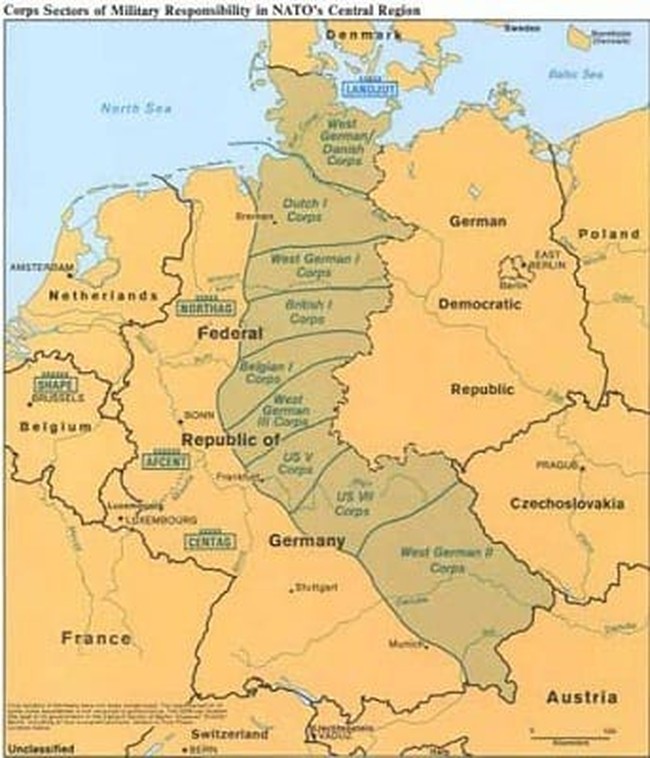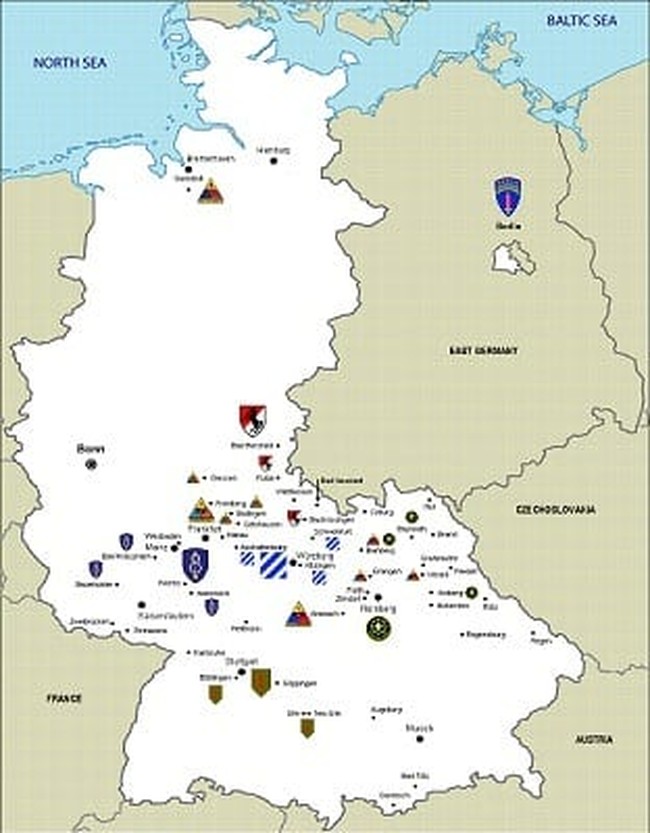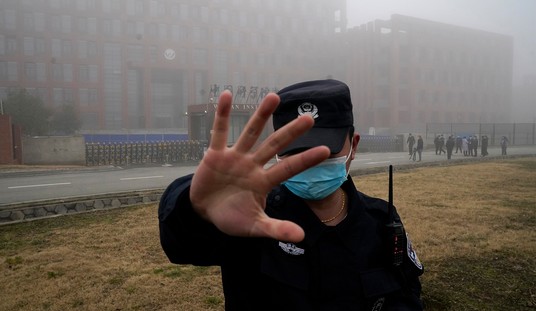
U.S. Defense Secretary Jim Mattis, left, and South Korean Defense Minister Song Young-moo shake hands while posing for a photo prior to the 49th Security Consultative Meeting (SCM) at Defense Ministry in Seoul, South Korea, Saturday, Oct. 28, 2017. (AP Photo/Lee Jin-man, Pool)
I’ve long believed that one of the biggest fallacies concerning a possible war between the United States and North Korea was that such a war had, of necessity, to involve South Korea. While that is the most likely scenario, it is not inevitable, and today it took a step closer to being possible.
To believe that a military strike by the United States on North Korea would inevitably set off a new Korean War you have to believe that a) South Korea wants such a war, and b) that North Korea would reflexively attack South Korea knowing that it would mean an end of the Kim dynasty either by destruction or the by Chinese turning Korea into closely managed territory.
In order to better understand how this works in principle, let’s look at a lesson from the US Army of the early 1970s:
So you don’t think I’m engaging in nutbaggery, indulge me by reading what follows. Back during the Cold War, the inter-German frontier was divided into Corps areas assigned to various NATO armies. See the map below:
The stationing of US military units in Germany comported with this arrangement. US V Corps was headquartered in Frankfurt/Main and US VII Corps in Stuttagart.
Sometime around 1975, a young major at the US Army Command and General Staff College wrote a paper hypothesizing how the USSR could take a huge chunk of West Germany without starting a nuclear war.
- Step 1. Have the East Germans create a border dispute with West Germany well away from US forces (in his paper it was on the North Sea in the German/Danish Corps area and there were disputed border areas there).
- Step 2. Have the East German army roll across the border.
- Step 3. Send word that the Warsaw Pact viewed this as a German vs. German issue and would not take sides if NATO didn’t.
His theory was that the West would not mobilize and set off a world war when the USSR had not launched an attack.
Everyone knew that Germany was pretty much weak sister. They’d had enough of war by 1945, they weren’t all that keen on having nukes popped on their territory and they would probably go along with anything that would prevent a thermonuclear war starting, including losing territory to East Germany.
The paper caused some consternation and by 1978 a new US armored brigade had been deployed to Germany. If you look on the map below you can probably figure out which one it was.
The mission of 2nd Armored Division (Forward), strangely alone up north in Garlstedt, was to ensure that if any Warsaw Pact forces crossed the frontier in northern Germany that they would be engaged, undoubtedly suffer casualties, and force NATO action regardless of what the Germans wanted.
How does this apply to Korea?
Suppose, as tensions ratchet up, the South Korea president says, “We’re not interested in this nonsense. This is between the US and North Korea. We aren’t even going to bring our military up to alert status if you guys start shooting at each other. Moreover, we are not going to allow US forces in South Korea, especially the airbase at Osan, to be used to prosecute or support attacks on North Korea. BUT…if one single artillery shell falls on South Korea, then we are on you like ugly on an ape, like white on rice, like stink on poo.”
This gives North Korea an out. They can shoot missiles at Guam or whatever, but they know that the regime is not in jeopardy and Kim knows eventually we’ll tire of kicking his ass and stop. China would probably yawn because they know US and ROK forces aren’t crossing the DMZ. The political problem for the Trump administration is minimized because the controlling images will be Tomahawks and JDAMs obliterating stuff in North Korea.
Consider this. All B-1B flights into the theater have been escorted by either Japanese or South Korean fighters…except this one:
On Sept. 23, hours after the latest threats from Kim Jong Un who said that Pyongyang will soon test a hydrogen bomb over the Pacific, U.S. Air Force B-1B Lancer bombers from Guam, along with U.S. Air Force F-15C Eagle fighter escorts from Okinawa, Japan, flew in international airspace over waters east of North Korea.
This time, the show of force is a bit more interesting than usual, for four reasons:
1) it is the farthest north of the Demilitarized Zone (DMZ) any U.S. fighter or bomber aircraft have flown off North Korea’s coast in the 21st century;
2) unlike all the previous ones, the latest sortie was flown at night, hence it was not a show of force staged to take some cool photographs;
3) no allied aircraft is known to have taken part in the mission at the time of writing, whereas most of the previous B-1 missions near the Korean Peninsula involved also ROKAF (Republic Of Korea Air Force) and/or JASDF (Japan’s Air Self Defense Force) jets;
4) it was a U.S. Air Force job: no U.S. Marine Corps F-35B stealth jet took part in the show of force this time, even though the STOVL (Short Take Off Vertical Landing) variant of the Joint Strike Fighter has taken part in all the most recent formations sent over Korea to flex muscles against Pyongyang. The photo here below shows the “package” assembled for Sept. 14’s show of force.
What happened this weekend? Secretary of Defense James Mattis was in South Korea and the subject of operational control (OPCON) of ROK military forces came up. OPCON is a very specific command relationship. It means that all administration and logistics are the responsibility of the force under OPCON, but tactical decisions are made by the headquarters exercising OPCON. It is the least restrictive command relationship, the next higher are, in order, attached and assigned. Up until 1994, ROK forces were under the daily OPCON of the US four-star commanding what today is called ROK/US Combined Forces Command. This meant that a US general, with one, count them, one US division in the country, was in command of 47 (+/-) ROK active and reserve divisions. In 1994, ROK forces were returned to the daily control of the ROK government but remained under the wartime OPCON of ROK/US CFC. South Korea has been agitating for the ROK to control its own forces in wartime and that has been an issue for the current president, Moon Jae-in.
The timing of South Korea’s resumption of wartime operational control (OPCON) from the United States has gained fresh attention due to a subtle change in the wording of their annual defense ministers’ joint statement released Saturday.
At the close of the Security Consultative Meeting (SCM), Defense Minister Song Young-moo and his U.S. counterpart James Mattis issued a statement that affirmed their leaders’ decision in June to enable an “expeditious” OPCON transfer.
In last year’s SCM document, the allies’ defense chiefs mentioned “stable wartime OPCON transfer at a proper time.”
The change in the wording appears to reflect South Korean President Moon Jae-in’s pursuit of a transfer at an early date, observers said.
During his election campaign, Moon pledged to push for the takeover within his five-year term, which ends in 2022. But he has recently referred to an “early” transfer, in an apparent reflection of North Korea’s escalating military threats.
During a joint press conference Saturday, Song cautioned against interpreting the change in the wording as advancing the timing of OPCON transition.
“This is not to advance the timing, but it means that we will try to quickly make conditions (for the transfer) develop, and we will resume (OPCON) when the time is right,” Song said.
But, total control of their own military means that South Korea would not necessarily be drawn into a US-DPRK conflict, particularly if it were preemptive on our part. The ROK president would be able to say he was staying out unless there was an aggressive push by the DPRK against the ROK. The fact that the DMZ is 100% manned by ROK troops also removes a flashpoint. Think about this quote from Mattis back in September:
Asked whether there were any military options the United States could take with North Korea that would not put Seoul at grave risk, Mattis said: “Yes there are. But I will not go into details.”
I think most would agree it is hard to see how any action against North Korea that also dragged South Korea into the conflict would not see Seoul damaged, though I don’t subscribe to the “Seoul destroyed by artillery” hokum.
This is not a prediction of future actions, but it is one of many signs, like three aircraft carriers in the theater, like rotating a 10-plane F/A-18 Hornet squadron out of Japan and backfilling it with a 12-plane squadron, like formally reassigning the THAAD battery on temporary duty to Korea instead of rotating it home, these actions say deadly serious preparations are being made for a potential war with North Korea. The OPCON issue could be a political gesture to Moon, or it could be preparing to clear the decks for action.














Join the conversation as a VIP Member